2022 FCC Food Report: Exploring seafood preparation
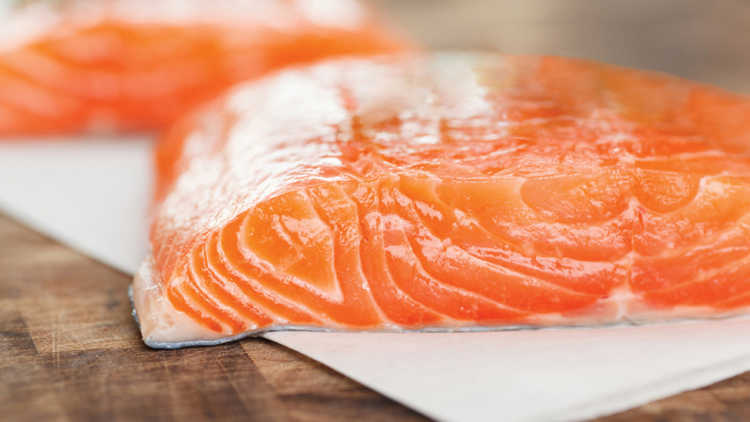
This information is shared from the 2022 FCC Food Report – highlighting the opportunities and challenges for Canadian food manufacturers by industry. To get the bigger picture – read the full report.
Introduction
The seafood industry had a strong 2021. Global seafood demand started to move back from retail towards foodservice, helping volume shift towards more premium fish like salmon. Sales increased 22.3% in 2021, surpassing both 2020 and 2019 (Table G.1).
Exports grew over 41% YoY in 2021 led by a rebound in lobster and crab trade with the U.S. and a growing diversified list of importers in Europe. Higher prices supported exports and sales in the later part of the year, but overall, on a monthly average basis, prices declined on weaker prices in Q1 and Q2.
Employment grew just over 7% in 2021 but remained below 2019 levels. Businesses have been increasingly efficient at using labour throughout the past decade, and 2021 was no different.
The aquaculture industry in Canada has been growing steadily and accounts for over 28% of total seafood value according to the Canadian Aquaculture Industry Alliance. Going forward, growing sustainable fishing farms will likely be the long-term driver of growth.
Table G.1: Record exports drove sales growth in 2021
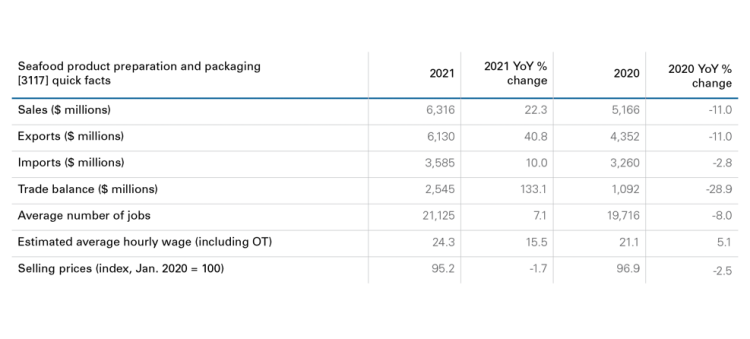
Source: Statistics Canada, FCC Economics
Gross margins
Gross margin as a percent of sales increased in 2021 compared to both 2020 and 2019 (Figure G.1). Higher gross margins were a result of growing foodservice volumes, where a more premium mix of products with higher margins is sold. Raw fish costs increased an estimated 21% YoY and total hourly labour costs increased over 20%. However, these higher costs where offset by strong volumes and stronger prices in Q3/Q4. We expect 2022 to be a mixed year. Sales of higher-value fish like salmon should support margins, but we’re expecting lower total volumes YoY that could impact profitability if labour costs continue to rise.
Figure G.1: Seafood product margins were strong in 2021
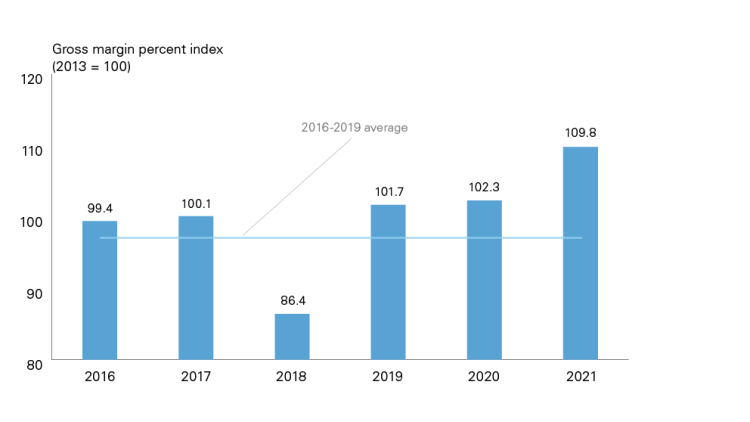
Source: Statistics Canada, FCC Economics
Sales forecast
FCC Economics projects sales to decrease 16.9% in 2022. Despite a very strong year in 2021, sales are expected to retreat to the long-term trend in 2022 (Figure G.2). Q1 is anticipated to be the strongest quarter, as exporting businesses benefit from the global re-opening. Sales growth in the second half of the year will be partially impacted by the elimination of salmon farming licences in the B.C. Discovery Islands, impacting plants in the Lower Mainland and Vancouver Island. East coast salmon farming expansion will partially offset these declines.
Figure G.2: Seafood product sales are expected to decrease 16.9% in 2022

Source: Statistics Canada, Barchart, Moody’s Analytics, FCC Economics
Grocery report
Grocery seafood sales increased 0.1% in 2021 YoY, slightly below the total grocery food increase of 0.3% as consumers purchased less canned seafood (Table G.2). Much like other industries, convenience was important in seafood, with sushi seeing a 33.0% increase in sales, almost all driven by increased volumes. Imitation and fresh seafood performed in line with total grocery, although imitation saw much stronger volume growth. Overall, seafood inflation (2.4%) was below the food average of 3.3%.
Table G.2: Canned seafood sales declined in 2021
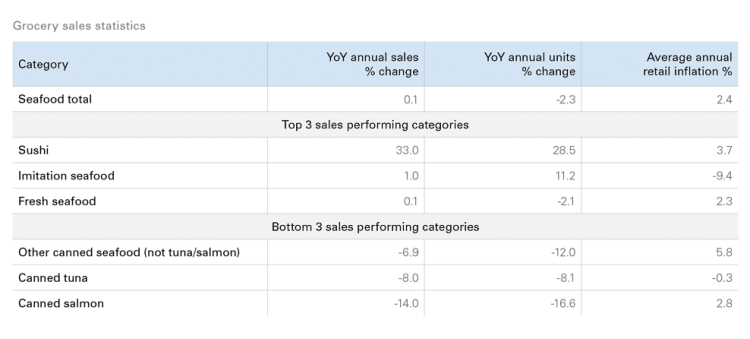
Source: Nielsen
Bottom line
Foodservice demand and export markets are paramount to Canada’s seafood industry success. These two channels provide significant sales opportunities that drive volume, especially for premium products like salmon, lobster and crab. Long-term opportunities include communicating the convenience and health of seafood products to drive at-home consumption and support sustainable aquaculture growth in Canada.
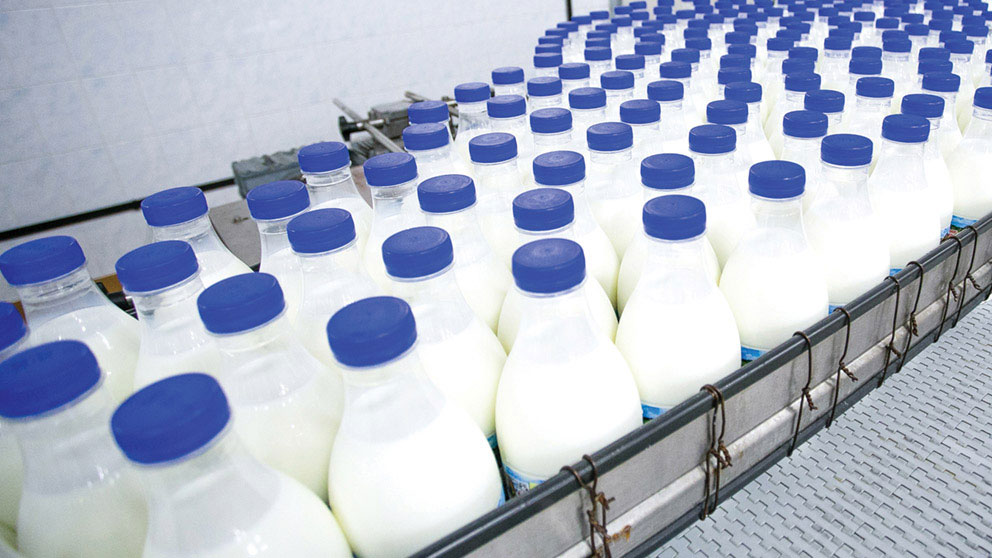
Dairy product revenues grew in 2021 but were lower than anticipated due to softer demand.

